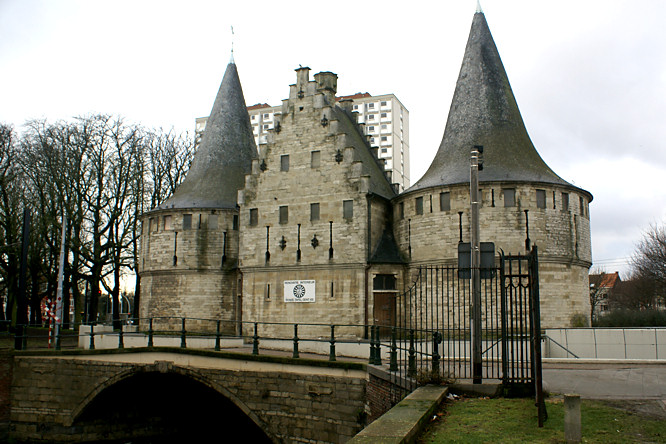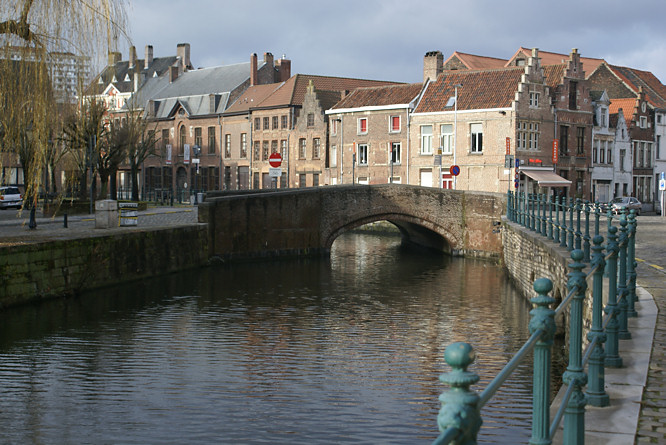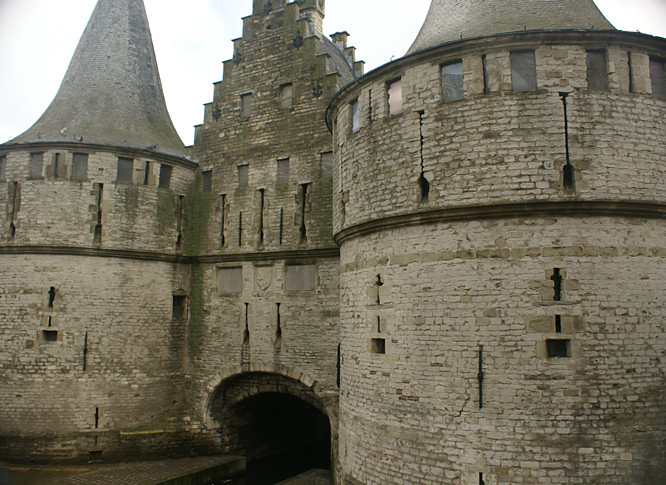Ghent's Het Rabot old city wall stronghold gateway
The Het Rabot two towered fortified gateway used to be part of the city walls of old Ghent. It is not in the old centre so you have to go for a small walk to the North West of town along the Lieve canal. The canal side walk is charming and passes some interesting buildings of different architectural styles.

The remains of the fortress are not open to the public but is attractive to look at from the outside. It is well worth the walk. It is a fortified bridge with a sluice that stands at the point where the River Lieve crossed the city moat. This area was a weak spot in the city's defences and, in 1488, Maximilian of Austria exploited this weakness to capture Ghent.
After a siege of 40 days, the imperial army was forced to retreat. Subsequently, the city councillors decided to build a stronghold with two towers which also served as a sluice on the Lieve. This gave rise to the name 'rabot', a corruption of the French word 'rabattre', which alludes to the lowering of the beams in the water. The building work started in 1489 and was completed in 1491. It could flood a big area around the city in times of need to help in the defence of the city.

As time went by, the Rabot became redundant as a stronghold. It has since been used as an ammunition depot, an icehouse, and a centre for collecting municipal patents. In 1860, a section of the Rabot was demolished in order to widen the passageway over the Lieve. The building has recently been restored and preserved for history. It stands at the edge of the old town, which unfortunately means that there are some really ugly modern 1950s buildings nearby.

Travel books

